When Things Don’t Go Right in the Lab, What Do We Do?
Scientific research is a journey filled with unexpected twists and turns. Our project, which aims to extract and identify shark DNA from liver oil products, is no exception. While our goal is to produce an open-access protocol for researchers worldwide, our initial attempts have reminded us that persistence is key to progress.

Variety of liver oil products being tested in the laboratory. Photo © Madeline Green
We set out to test whether methods developed for tracing olive oil origins could be applied to shark liver oil capsules. Using five different DNA extraction techniques—borrowed from food science and commercial DNA extraction kits—we hoped to retrieve genetic material from these highly processed products. The logic was simple: if DNA can be extracted from olive oil, why not from shark liver oil? Unfortunately, reality is proving more challenging.
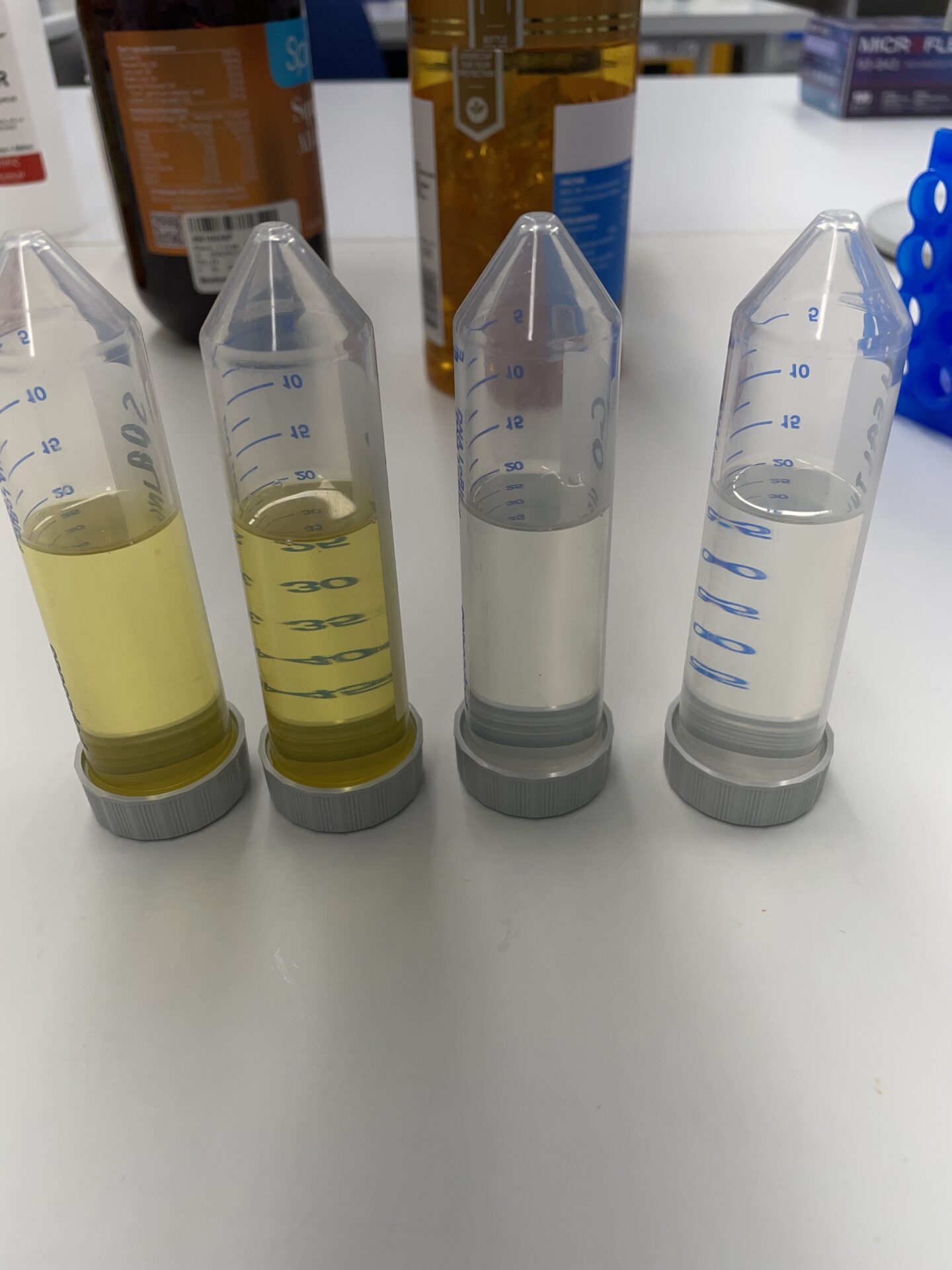
Despite being similar products, the colour and consistency of liver oils was very different. Photo © Madeline Green
Despite promising initial steps in the extraction process, we found no usable shark DNA in our final results. While this might sound like a failure, it’s actually an essential part of scientific discovery. Research rarely follows a straight path, and setbacks provide valuable insight into how we can refine our approach. Each unsuccessful attempt teaches us something new—about the limitations of our methods, the complexity of processed products, and the need to adapt our strategies.
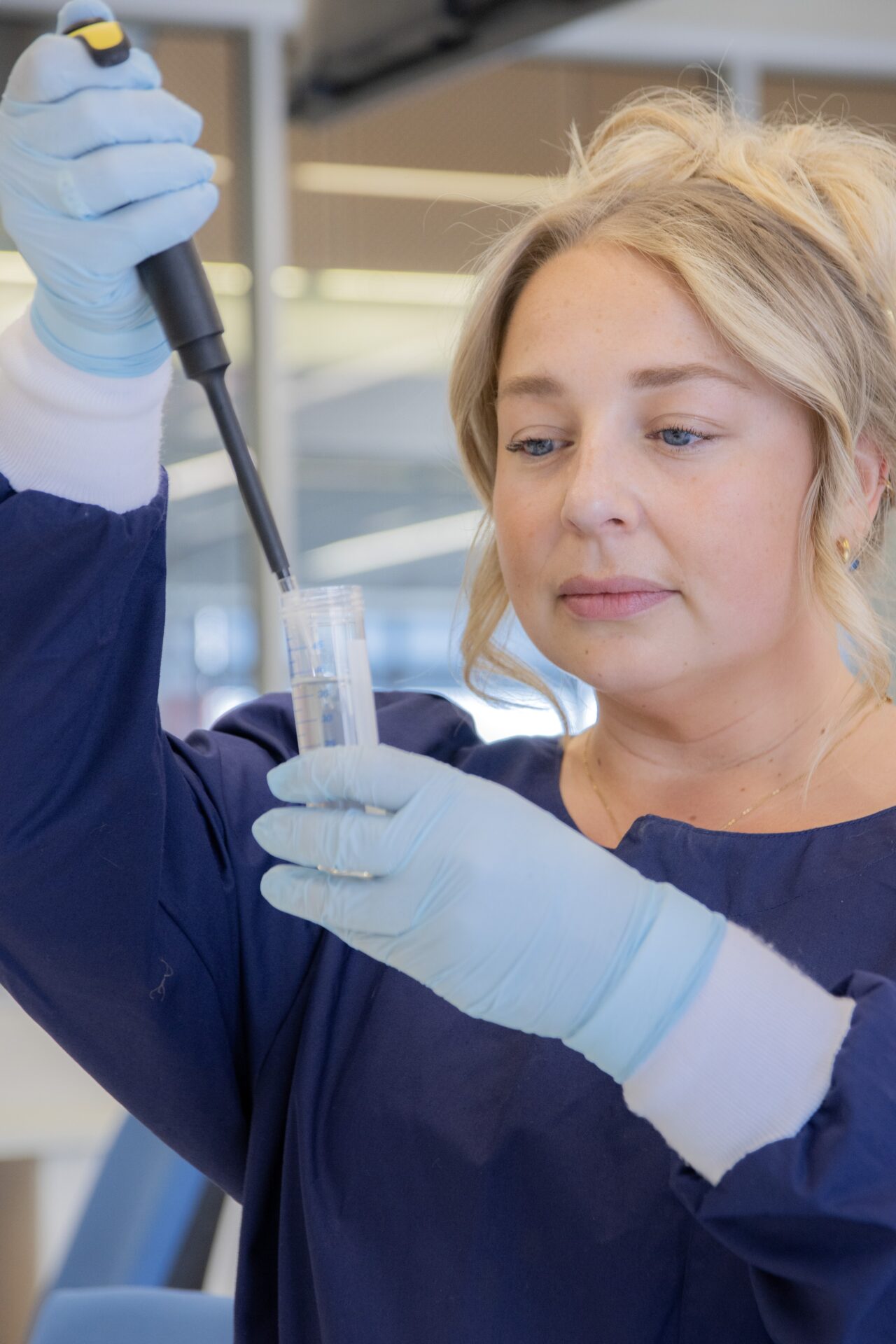
Dr Madi Green in the laboratory. Photo © Peter W Allen
So, what’s next? Instead of focusing solely on highly refined capsules, we are shifting our attention to less processed shark liver oil sources. By starting with fresher, single-source or multi-source liver and oil samples, we hope to bypass some of the degradation issues associated with extensive processing. Additionally, we will continue refining our extraction techniques, experimenting with alternative reagents and methods that may be more suited to these types of products.
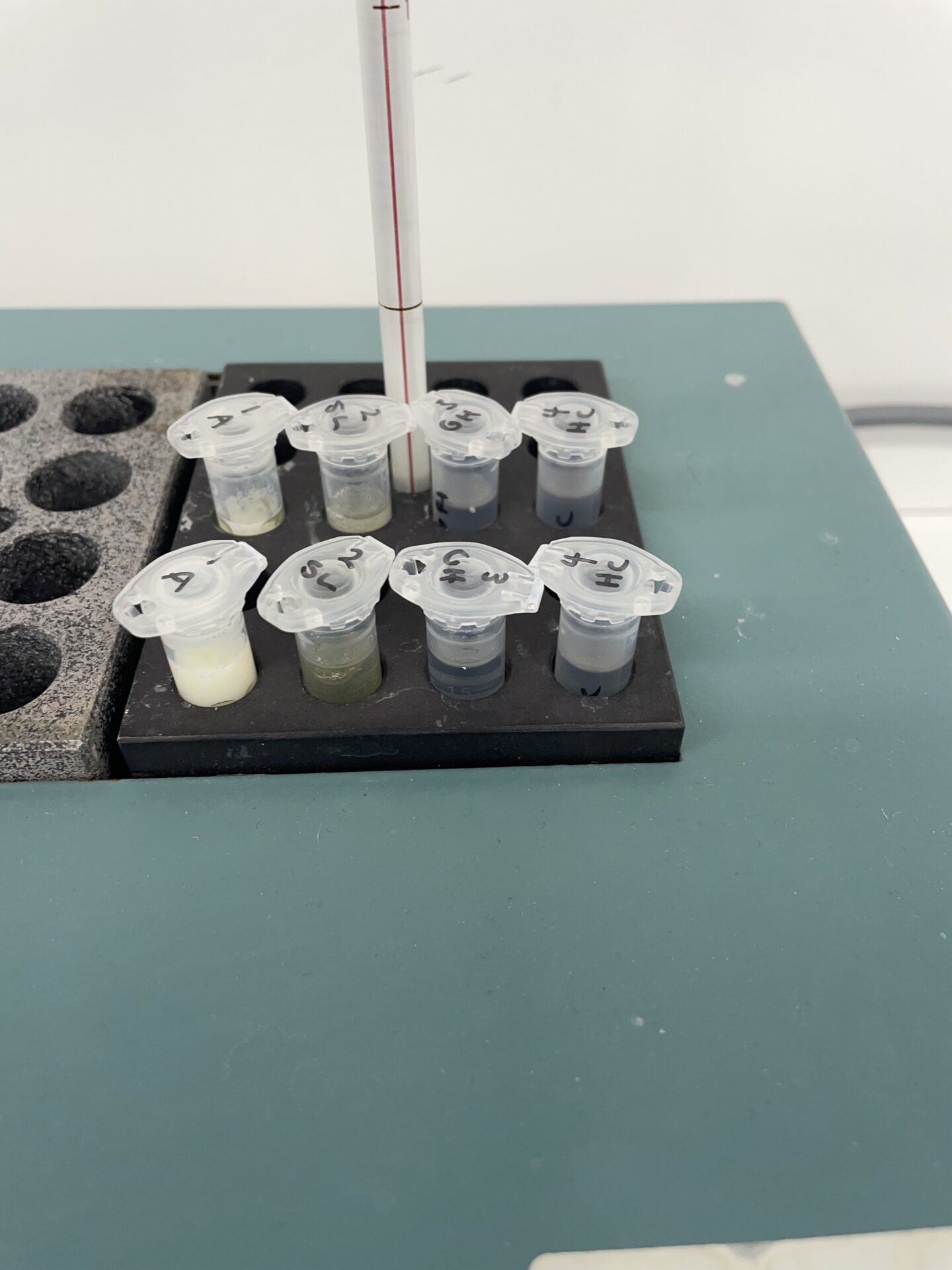
During DNA extractions samples are digested at warm temperatures (50-60C). Here we have samples placed in a heating block digesting. Photo © Madeline Green
Beyond the lab, our project carries an important conservation message. Many consumers are unaware of the shark species commonly used in liver oil products. By successfully identifying the DNA present, we can shed light on which species are being harvested and contribute to a more transparent supply chain. Ultimately, this information can support conservation efforts and encourage responsible consumer choices.
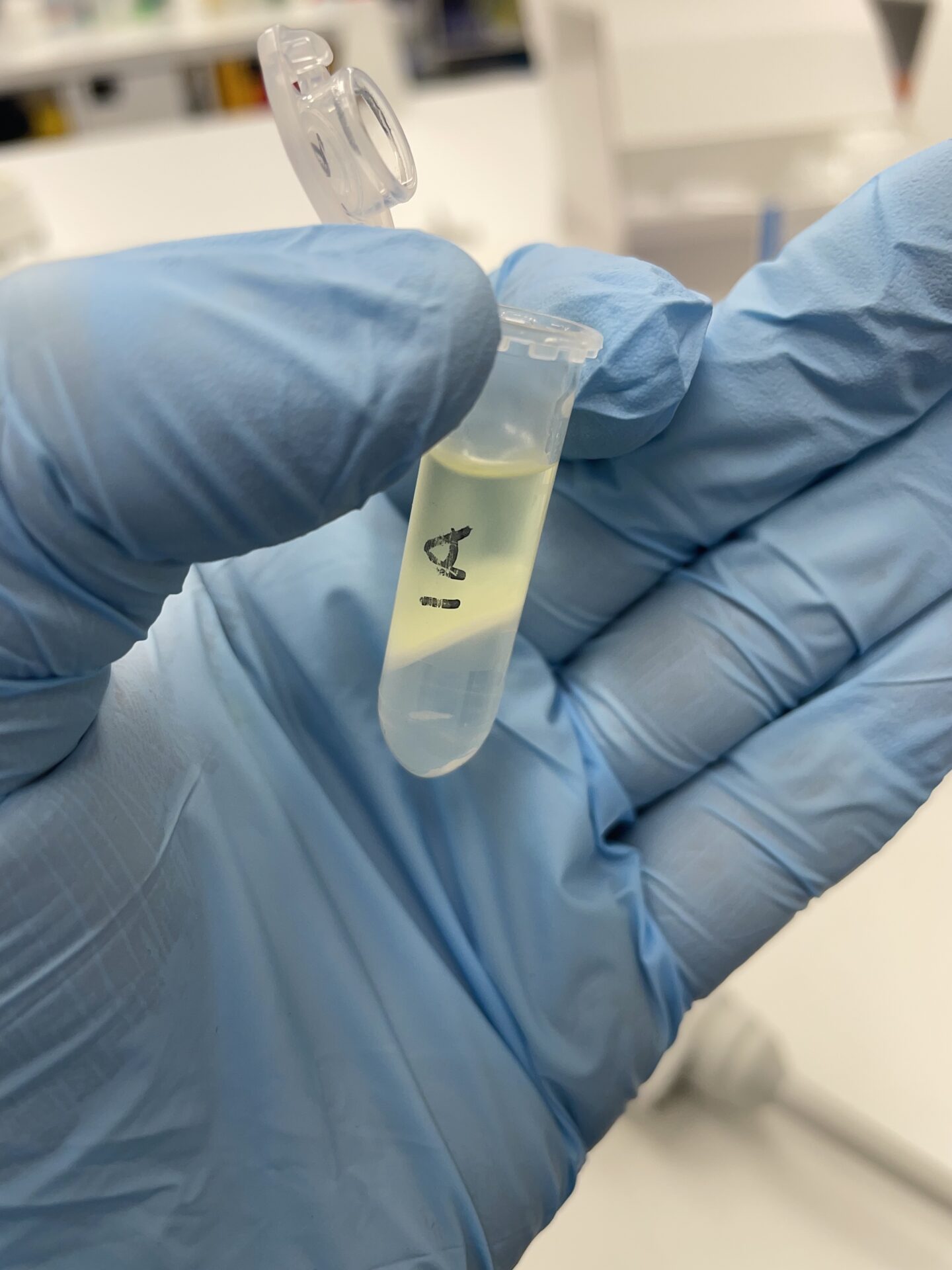
This was looking promising; you can see here a separation of lipid and extraction reagents with a thin film in between. This is common in olive oil DNA extractions. Photo © Madeline Green
Failure in science isn’t the end—it’s just another step toward discovery. As we move forward, we remain committed to problem-solving, adapting, and, most importantly, trying again… and again… and again! After all, the best breakthroughs often come after the biggest challenges.
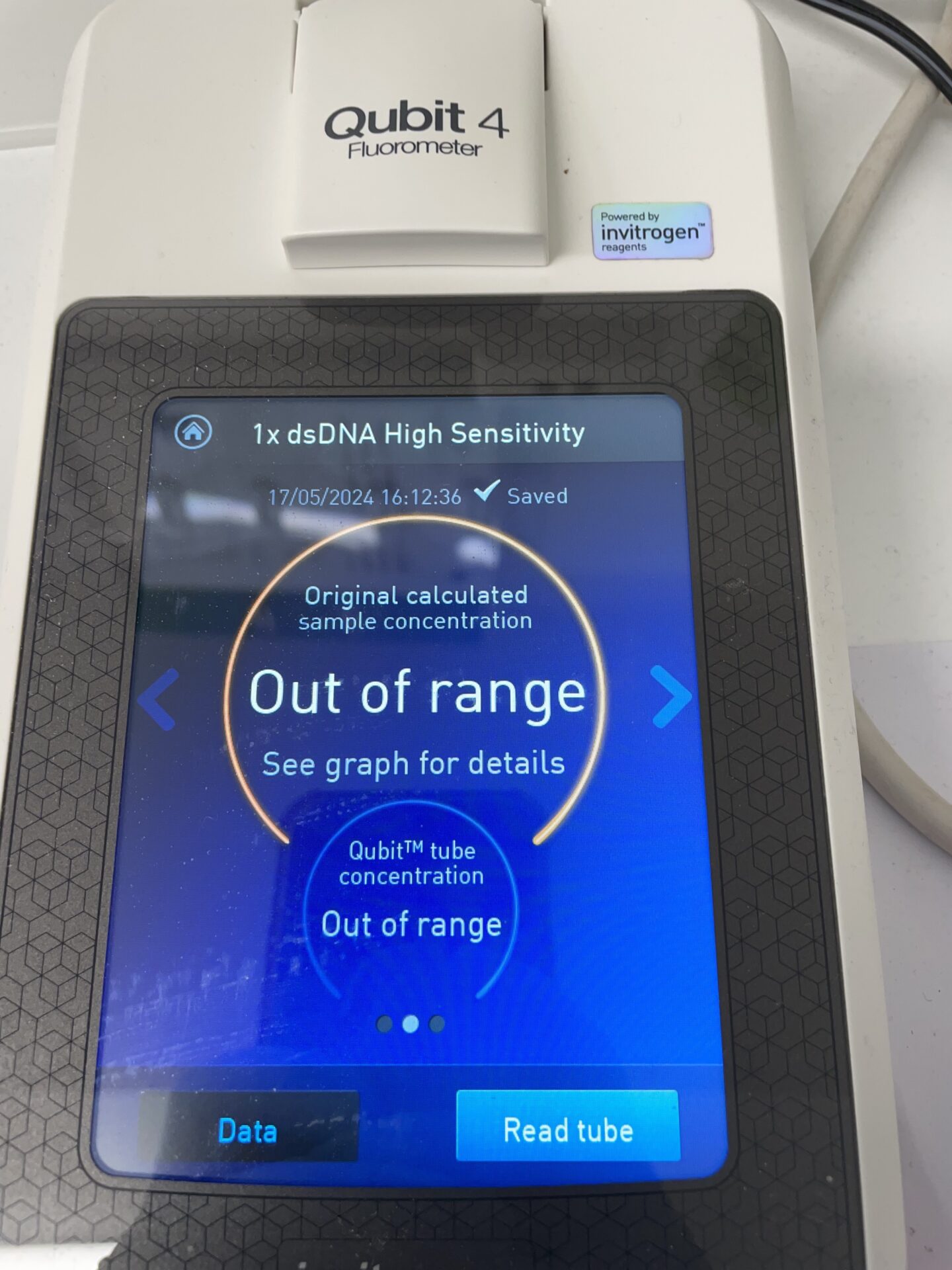
Unfortunately, this reading of "out of range" means DNA was not detected, but we have lots more ideas for how to successfully extract DNA in future attempts. Photo © Madeline Green
